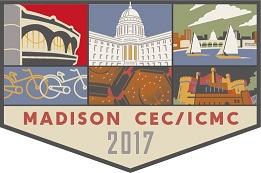Speaker
Description
Minimizing hysteresis losses and maximizing transport critical current density (J$_{ct}$) of superconducting wires is important for all magnet applications. In multi-filamentary Bi-2212 round wires, filaments can couple physically by grain-to-grain contacts (bridging) developed during heat treatment, providing either a strong, fully coupled or a weak SNS coupling. Bridging is especially prevalent in architectures with densely packed filaments and the associated loss component persists at high fields, unlike proximity coupling. Bi-2212 is the only high J$_c$ round wire HTS conductor, allowing it to be twisted, similar to LTS wires. Twisting helps reduce losses by constraining coupling currents to flow only across lengths of half the twist pitch instead of the entire length of the conductor but it may also be that twisting reduces bridging losses through the same mechanism. However, twisting has also been speculated to reduce J$_{ct}$ by damaging filaments, and by eliminating pathways around current-blocking obstacles that filament-to-filament coupling may provide. We are investigating the effect of twisting on hysteretic losses and J$_{ct}$ of overpressure (OP) processed Bi-2212 round-wires with both densely packed (37x18, heavy bridging) and sparsely packed (27x7, virtually no bridging) filament architectures. We used transport J$_c$ and magnetization hysteresis measurements to quantify changes in hysteretic losses and J$_{ct}$. We observed that twisting reduced hysteretic losses by 67% for the unbridged 27x7 and by 26% for the strongly bridged 37x18 wires while having no effect on J$_{ct}$. Twisting appears to be an effective way of improving the hysteretic loss characteristics of OP Bi-2212 round wires without compromising the crucial transport properties.
This work was supported by the US Department of Energy (DOE) Office of High Energy Physics under grant number DE-SC0010421, by the National High Magnetic Field Laboratory (which is supported by the National Science Foundation under NSF/DMR-1157490), and by the State of Florida.
